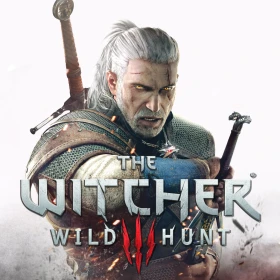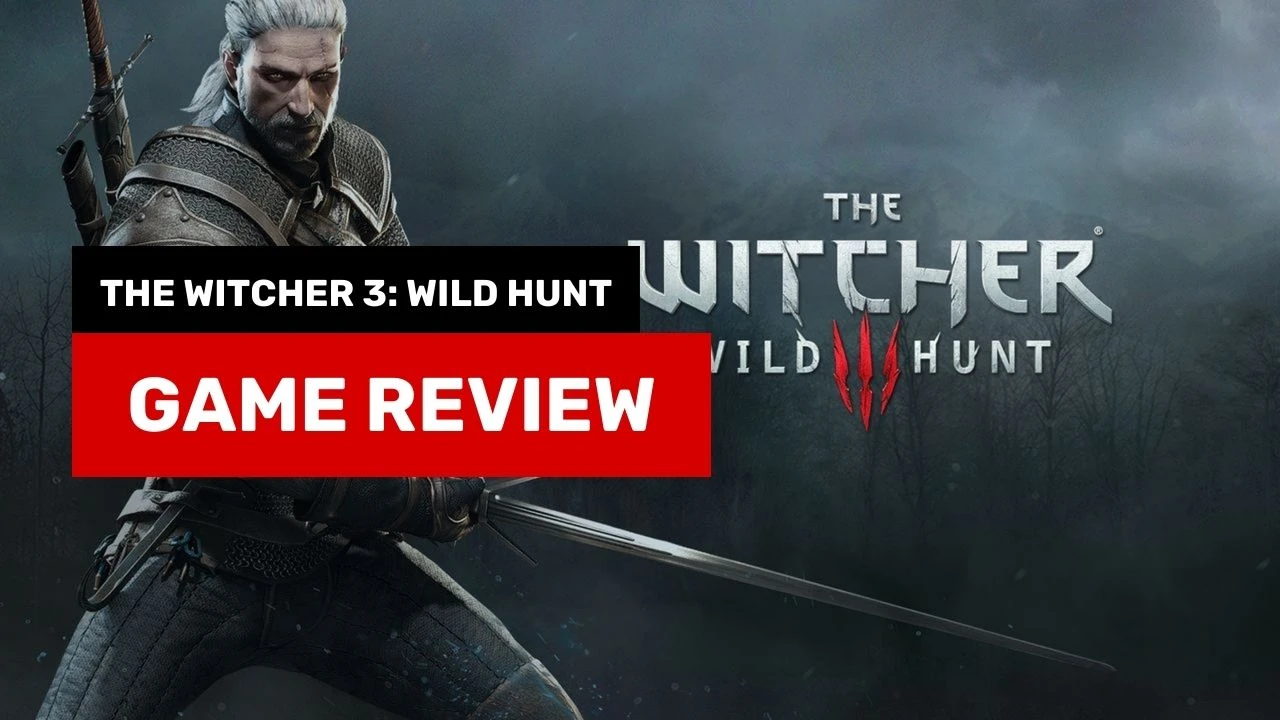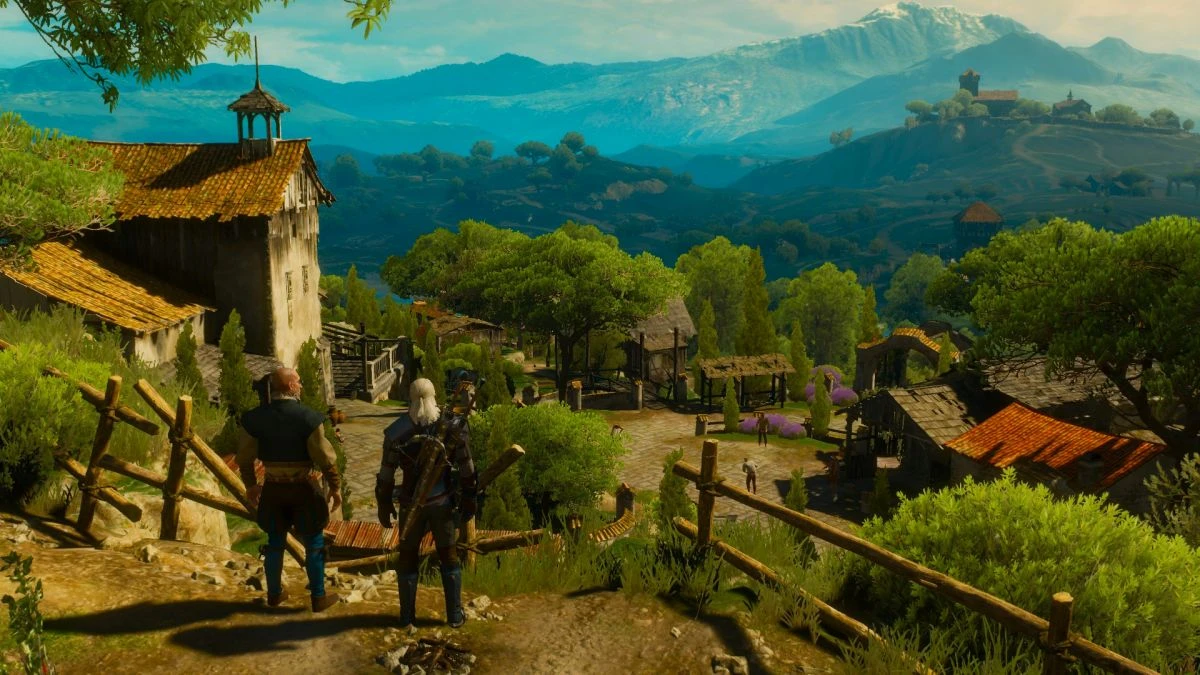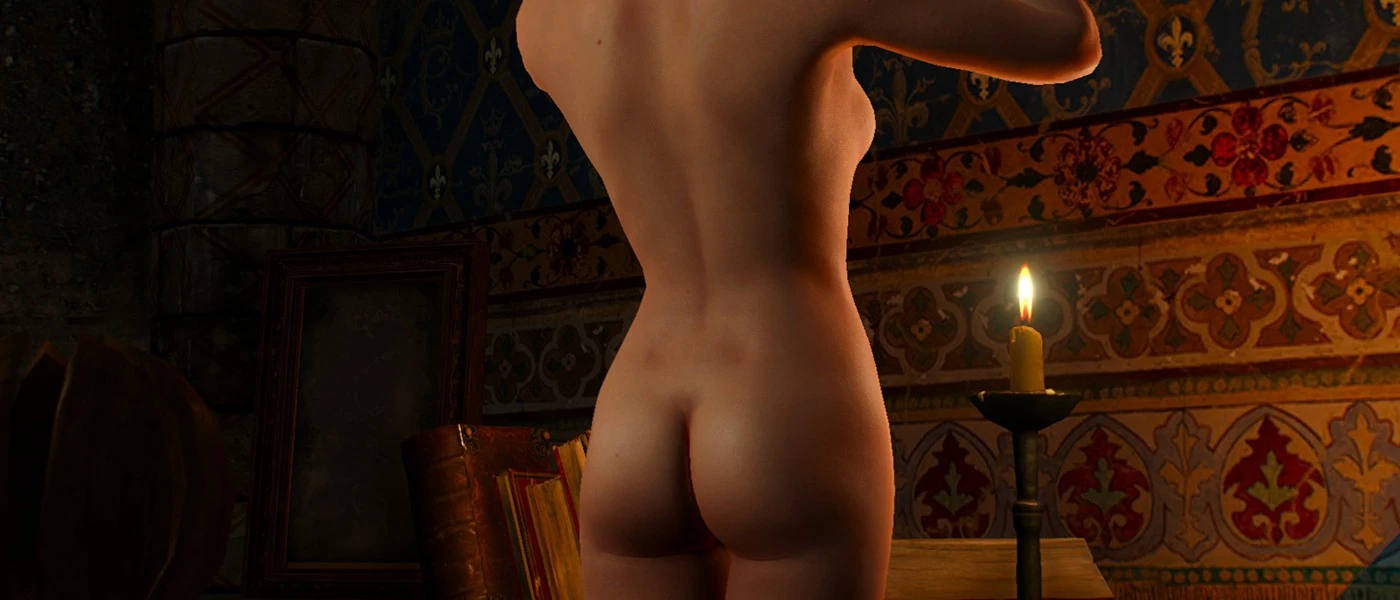Within the vast, immersive universe of RPGs, The Witcher 3: Wild Hunt stands as a towering achievement, setting a gold standard for storytelling, open-world gameplay, and depth of content. It masterfully combines complex narrative threads, dynamic combat, and an expansive world map filled with war-torn lands, alchemy, and a mosaic of quests that challenge and delight players. With its intricate blend of main narrative arcs, side quests, and richly developed characters, The Witcher 3: Wild Hunt redefines the role-playing genre, offering a compelling exploration of morality, power, and the consequences of choice.
This article delves into the myriad facets that make The Witcher 3: Wild Hunt a masterpiece of modern gaming. From the meticulously designed gameplay mechanics and the robust open-world experience to the game's visuals, performance, and captivating soundtrack, each element contributes to the game's singular identity. We'll also explore the game's legacy, controversies, and how it compares with its predecessors and contemporaries, not to mention the impact of mods and system requirements on the player's experience. Through this comprehensive review, readers will gain an in-depth understanding of why The Witcher 3: Wild Hunt continues to enchant and engage new and returning players alike, years after its initial release.
Gameplay and Mechanics
Combat System
The Witcher 3: Wild Hunt offers a unique blend of authentic and fictional swordplay, creating a combat system that is both engaging and challenging. Players will find that mastering the combat requires understanding the nuances of sword fighting against diverse enemies. Geralt's style emphasizes agility and precision, utilizing a mix of steel swords for human foes and silver swords for supernatural enemies. The game introduces a variety of defensive and offensive maneuvers, including parrying, dodging, and the strategic use of signs to disorient opponents. The combat system is designed to be fluid, with Geralt's movements reflecting the lightness and lethality of his weapons.
Exploration and Quests
Exploration in The Witcher 3 is vast and segmented, with multiple regions such as White Orchard, the Northern Kingdoms, and the Skellige Islands, each offering unique landscapes and challenges. Players begin their journey in White Orchard, a relatively safe area, but as they progress, they can explore more dangerous territories filled with stronger monsters. The game cleverly uses its world design to gradually introduce players to its complex systems of quests and exploration. Signposts scattered across the lands serve as fast-travel points, but they must be discovered first, encouraging thorough exploration.
Character Progression and Skills
Character development in The Witcher 3 is deeply tied to its RPG mechanics, focusing on a progression system where skills and abilities are unlocked through leveling up. Geralt can equip various types of armor and weapons that affect his combat style, from the fast-attacking light armor to the sturdy heavy armor that enhances his durability in battle. The game also features an intricate alchemy system, where players can craft bombs and potions that provide strategic advantages in combat. Skills are divided into several categories, including combat, signs, and alchemy, each offering unique abilities that can be customized to suit different playstyles.
Story and Characters
Narrative Depth
"The Witcher 3: Wild Hunt" excels in its narrative complexity, weaving a rich tapestry of interconnected stories that span the vast landscapes of its world. The main storyline focuses on Geralt’s quest to find Ciri, his adopted daughter, who is pursued by the enigmatic Wild Hunt. Parallel to this, the game is filled with micro-narratives through side quests and witcher contracts, each adding layers to the overarching story. These narratives are not only deeply embedded in the game's world but also offer players the freedom to explore them in various orders, enhancing the sense of a living, breathing world.
Character Development
Characters in "The Witcher 3" are crafted with remarkable attention to detail. Geralt, the protagonist, is portrayed not just as a monster hunter but as a complex figure grappling with personal dilemmas and the weight of his decisions. The secondary characters, from the Bloody Baron to the sorceress Keira Metz, are equally nuanced, with their own backstories and motivations deeply intertwined with the main narrative. This depth is further enriched by the game's alignment of character development with gameplay mechanics, where players’ choices in dialogues and decisions visibly impact character arcs and their relationships with Geralt.
The Role of Ciri
Ciri's character arc is central to the narrative of "The Witcher 3". Born with powerful magical abilities and destined for greatness, her journey from a sheltered princess to a fierce warrior is fraught with peril and personal growth. Throughout the game, players uncover her story through flashbacks and interactions, revealing her struggles with her identity and destiny. Ciri's development is pivotal not only to the storyline but also to the thematic depth of the game, exploring themes of family, freedom, and the impact of one's choices on their world. Her role culminates in a series of crucial decisions that influence the game's ending, emphasizing her significance in the narrative and to Geralt himself.
Visuals and Performance
Graphics and World Design
The Witcher 3: Wild Hunt is not only celebrated for its engaging gameplay and complex narrative but also for its stunning visual presentation. The game's graphics and world design are pivotal in creating an immersive experience for players. CD Projekt Red employed various advanced techniques to bring the game's fantasy world to life, ensuring each location from the bustling streets of Novigrad to the rugged terrains of Skellige is rendered with remarkable detail and authenticity.
-
High-Resolution Textures: Utilizing tools like Substance Painter and Adobe Photoshop, artists at CD Projekt Red crafted high-resolution textures that bring surfaces and objects in the game to life. This meticulous attention to detail is evident in everything from the cobblestone paths of cities to the rugged outcrops of mountainous regions.
-
Photogrammetry: This technique was crucial in capturing real-world objects and landscapes, which were then translated into the game's stunning environments. By processing numerous photographs taken from multiple angles, the developers were able to create highly detailed 3D models and textures that enhance the game's realism.
-
Procedural Generation: To populate the expansive world of The Witcher 3 with a diverse array of environmental elements such as plants and rocks, CD Projekt Red integrated procedural generation techniques. This not only added variety but also enriched the game's ecosystems without the need for manually creating each detail.
-
Advanced Shader Technology: The use of sophisticated shader programs helped in achieving realistic lighting, shadows, and reflections that respond dynamically to different times of day and weather conditions, adding depth and life to the game world.
-
Art Pipeline: A structured art pipeline facilitated the consistent and high-quality creation of game assets, from concept art to the integration into the game engine. This process ensured that all visual elements conformed to the intended aesthetic and performance standards set by the developers.
Technical Performance Across Platforms
The Witcher 3: Wild Hunt's performance across various gaming platforms has been a focus for CD Projekt Red, especially in optimizing the game to run smoothly on both consoles and PC. Each platform offers unique advantages and challenges in terms of rendering capabilities and performance metrics.
-
Console Performance: On the PlayStation 4, The Witcher 3 runs at 1080p/30fps, providing crisp visuals at a stable frame rate. The Xbox One version operates at 900p/30fps. These settings ensure that players enjoy a consistent and engaging gaming experience, balancing visual fidelity and performance.
-
PC Performance: Players with high-end PCs experience the best visual quality, with adjustable settings that can maximize the capabilities of their hardware. The flexibility in graphics settings allows PC gamers to enjoy superior textures, lighting, and effects.
-
Next-Gen Enhancements: With the advent of newer console versions like the PlayStation 5 and Xbox Series X, The Witcher 3 has received significant upgrades. These include two new modes: a Performance mode that targets 60fps and a Ray Tracing mode at 30fps. The Ray Tracing mode introduces advanced lighting features such as ray-traced ambient occlusion and global illumination, greatly enhancing the visual depth and realism of environments.
-
Resolution and Frame Rate: The next-gen consoles also support higher resolutions and dynamic scaling to maintain performance. For instance, the Ray Tracing mode operates at a native 1440p, reconstructed to 1080p in demanding scenes, while the Performance mode pushes the resolution even higher, aiming for 4K with dynamic adjustments based on the scene complexity.
The continuous efforts to enhance The Witcher 3's visuals and performance across different platforms demonstrate CD Projekt Red's commitment to delivering a superior gaming experience, ensuring that both new players and returning fans can enjoy the richly detailed world of The Witcher 3: Wild Hunt.
The Open World Experience
Size and Density of the Game World
The Witcher 3: Wild Hunt offers an expansive open world that sets a benchmark in the realm of RPGs with its 142 km² map, surpassing many predecessors in sheer size and detail. This vast landscape is not just about scale but also about the depth and variety it offers. From the bustling streets of Novigrad to the mysterious islands of Skellige, each area is meticulously crafted with hand-placed quests and environmental storytelling that draw players deeper into the game's rich lore and history.
Interactivity and Environmental Details
The immersive experience of The Witcher 3 is significantly enhanced by its dynamic environmental systems. The game features a full day and night cycle and a variety of weather conditions that influence gameplay and character behavior. Townsfolk retire to their homes at night, and the world reacts to weather changes, such as seeking shelter during rainstorms, adding a layer of realism to the player's interaction with the game world.
-
Dynamic Weather System: The impact of weather extends beyond aesthetic changes; it influences gameplay mechanics and character interactions. For instance, certain creatures only appear under specific weather conditions, adding a strategic layer to combat and exploration.
-
Environmental Sounds and Effects: The attention to auditory details is meticulous. The sound of rainfall, the rumble of thunder, and the ambient sounds of wildlife contribute to a living, breathing world. Whether it is the crackling of a nearby fire or the distant howl of a wolf, these elements enhance the atmospheric immersion.
-
Interactive Environments: Players can interact with various elements of the environment, from destructible objects to usable items scattered throughout the world. This interactivity extends to the game’s numerous side quests and hidden stories that players can discover through exploration, making each journey through the wilderness feel unique and personal.
The Witcher 3’s open world is not just a backdrop for its narrative but a fully interactive space that responds to and reflects the player’s actions and decisions, creating a deeply engaging experience that keeps players returning to explore its vast, detailed environments.
Sound and Music
Score and Soundtrack
The auditory experience of "The Witcher 3: Wild Hunt" is a pivotal aspect that complements its rich narrative and immersive gameplay. The soundtrack, crafted by Marcin Przybylowicz, Mikolaj Stroinski, and the Polish folk metal band Percival, is a masterful blend of Slavic themes brought to life through traditional folk instruments. Instruments such as the lute, hurdy-gurdy, renaissance fiddle, baÄŸlama, and the bowed gusli play a crucial role in creating an authentic, epic fantasy ambiance. These instruments, integral to Slavic folklore, enhance the game's setting and mood, imbuing each scene with a sense of place and time that is deeply rooted in medieval and folk influences.
The music tracks, including over an hour of compositions, vary from hauntingly beautiful vocal pieces like "Steel for Humans" and "Silver for Monsters" to the energetic and foreboding "Geralt of Rivia." This main menu theme sets the tone for the game, building from a calm, melodic introduction to a powerful crescendo that underscores the epic scope of Geralt's journey. The soundtrack's ability to evoke a wide range of emotions enriches the player's experience, making each battle, exploration, and narrative twist feel uniquely impactful.
Voice Acting and Sound Effects
Voice acting in "The Witcher 3" significantly contributes to its storytelling excellence. Each character's voice brings depth and personality, making the dialogues and interactions believable and engaging. The game's voice acting complements the high-quality writing, allowing characters like Geralt, Ciri, and the Bloody Baron to fully develop and resonate with players.
Sound effects in "The Witcher 3" are meticulously crafted to enhance realism and immersion. The use of diegetic sounds, such as the clashing of swords, the galloping of horses, and the environmental noises of bustling marketplaces or quiet forests, is masterfully executed. These sounds are not just background noise but are integral to the game's world-building, enhancing the player's immersion by making the world feel alive and dynamic. The attention to detail is evident in how the sound design supports the gameplay, from the subtle rustling of leaves to the impactful sounds of combat.
Furthermore, the implementation of advanced audio technologies such as stereophonic and surround sound options elevates the experience, allowing players to fully immerse themselves in the richly detailed world of "The Witcher 3." The game's audio design excels in creating a believable, captivating soundscape that enhances every element of the game from the ground up.
Comparison with Predecessors and Contemporaries
Improvements from The Witcher 2
The evolution from The Witcher 2: Assassins of Kings to The Witcher 3: Wild Hunt represents a significant leap in terms of gameplay mechanics, graphical fidelity, and narrative depth. The second installment laid a robust foundation with its detailed character designs and improved particle physics, which were further enhanced in The Witcher 3. Notably, the transition to an open-world format allowed for a more immersive experience, enabling players to explore vast landscapes and interact with a dynamic environment.
One of the most notable improvements in The Witcher 3 is the responsiveness of the combat system. Unlike in The Witcher 2, where players often had to wait for an animation to complete before executing another command, The Witcher 3 offers a more fluid combat experience. This change allows for quicker reactions and a smoother flow of battle, making combat feel more intuitive and engaging.
Additionally, the introduction of horseback combat in The Witcher 3 expanded the possibilities for exploration and combat, providing a fresh dynamic to the gameplay that was absent in the previous games.
Comparison with Other RPGs
When placed alongside contemporaries, The Witcher 3: Wild Hunt stands out for its intricate narrative and deep role-playing elements. Unlike many RPGs that feature a binary good-vs-evil storyline, The Witcher 3 presents a morally complex world where choices have significant consequences. This narrative depth creates a more engaging experience as players must weigh their decisions against potential outcomes affecting the world and its inhabitants.
In comparison to other RPGs like Skyrim, where the environment serves primarily as a backdrop, The Witcher 3 integrates its setting into the gameplay through environmental storytelling and a dynamic weather system. These elements not only enhance the visual appeal but also affect gameplay, influencing how players interact with the world and its characters.
Furthermore, The Witcher 3 excels in character development. The game's protagonist, Geralt, is portrayed with a level of depth and complexity seldom seen in RPGs. This is complemented by a cast of well-developed secondary characters, each with their own distinct personalities and stories, enriching the overall narrative experience.
In terms of technical advancements, The Witcher 3 utilizes cutting-edge graphics and animation technologies that set a high standard for future RPGs. The game's use of advanced texturing, lighting, and weather effects creates a lifelike world that immerses players in its dark yet beautiful universe.
Overall, The Witcher 3: Wild Hunt not only improves upon its predecessors but also sets itself apart from other games in the RPG genre through its innovative gameplay, compelling story, and technical excellence. Its success is a testament to the careful design and attention to detail employed by CD Projekt Red, making it a benchmark for future games in the genre.
Controversies and Criticisms
Graphics Downgrade Allegations
The Witcher 3: Wild Hunt faced significant scrutiny over allegations of a graphics downgrade compared to the visuals shown in its early promotional materials. This controversy began when differences were noted between the game's initial trailers and the final product. The most prominent discussions centered around the VGX promo trailer, which was presented as featuring "in-game footage." As development progressed, some players and critics pointed out that the visual fidelity, particularly in terms of textures, lighting, and environmental details, seemed reduced in the released version.
-
Public Reaction: The gaming community's reaction was mixed, with some expressing disappointment over the perceived downgrade, which they felt misled by the initial promotional content. This sentiment was fueled by comparisons made with other games that had undergone similar scrutiny, such as Watchdogs.
-
Developer Response: CD Projekt Red faced these allegations head-on, although their responses varied. Some statements suggested that changes were due to technical limitations and optimizations necessary for smoother performance across various platforms. However, there was never a formal, candid acknowledgment of a downgrade, leading to continued debate within the community.
-
Community Forums: The topic became so contentious that it was reportedly banned from official CD Projekt Red forums. Discussions around the downgrade were heavily moderated, and in some cases, posts were deleted or altered, which only added to the controversy.
Handling of Mature Content
The Witcher 3: Wild Hunt is well-known for its mature content, including its portrayal of sex and nudity. The game's approach to adult themes has been both praised for its narrative integration and criticized for perceived excessiveness.
-
Sexual Content: The game features numerous sex scenes, which some players felt were too explicit and frequent, drawing comparisons to the content typically found in adult films. This aspect of the game sparked debates about the necessity and execution of such scenes within the narrative context of The Witcher 3.
-
Community Opinions: Opinions within the gaming community varied significantly. Some players appreciated the mature content for its alignment with the game’s dark and adult-themed narrative, arguing that it sets The Witcher apart from other games. Others hoped for a more subdued portrayal, suggesting that the sexual content should be more meaningful and less gratuitous, enhancing rather than detracting from the story.
-
Impact on Player Experience: Discussions also centered on how this mature content could affect the game's accessibility for younger audiences and whether it was appropriate for the game's themes. Some community members expressed concerns that the explicit content might limit the game's audience to older players only.
In conclusion, while The Witcher 3: Wild Hunt has been celebrated for its expansive world and deep narrative, it has not been without its controversies. The discussions around graphics downgrades and the handling of mature content highlight the challenges and complexities of game development and public expectations.
Final Thoughts and Legacy
The Witcher 3's Place in RPG History
"The Witcher 3: Wild Hunt" has undeniably carved a unique niche in the annals of RPG history. Not only has it received "universal acclaim" across multiple platforms, but it has also set benchmarks that few other titles have reached. With over 260 game of the year awards, it was the most awarded game of all time until 2021, a testament to its profound impact on both critics and players. Its sales figures are equally impressive, with the game selling over 50 million units by March 2023. This stellar performance is reflective of its deep narrative, immersive world, and innovative gameplay, which have collectively elevated the standard for role-playing games.
The Witcher series, with its roots in Andrzej Sapkowski's novels, has transcended its literary origins to become a standalone sub-genre within RPGs. It uniquely blends action-oriented gameplay with rich narrative and atmospheric world-building in a semi-open and, with the latest installment, open-world sandbox. This approach has not only captivated a vast audience but has also influenced how stories are told in video games.
Future Prospects for the Witcher Series
Looking ahead, the Witcher series shows no signs of slowing down. With the announcement of a new book by Andrzej Sapkowski set for a Winter 2024/2025 release and the upcoming "The Witcher: Sirens of the Deep" anime, the franchise continues to expand its reach across various media. The Witcher Season 4 is also in production, scheduled for a 2025 release, promising to bring fresh narratives and characters to fans around the world.
While Geralt's story has concluded, the potential for new narratives within the Witcher universe is vast. Discussions within the community suggest a strong desire for future games to possibly focus on Ciri, leveraging her unique abilities and backstory to explore new territories and adventures. This shift could offer a fresh perspective within the Witcher universe, tapping into unexplored aspects of the lore and potentially leading to a new saga that stands distinct yet connected to the tales of Geralt of Rivia.
The Witcher's legacy is not just in its storytelling or its commercial success; it's in the way it has inspired a generation of game developers and storytellers. As it continues to expand into new formats and stories, its place in the cultural and entertainment landscape seems assured, promising more adventures and more tales from this richly imagined world.
Conclusion
Throughout our exploration of "The Witcher 3: Wild Hunt," we have delved deep into the elements that make it a landmark in video game history—from its intricate storytelling and dynamic open-world setting to the sophisticated mechanics that bridge gameplay with narrative depth. The award-winning title's profound impact on the RPG genre is undeniable, offering a meticulously crafted world where every choice carries weight, and every character has a story, setting a benchmark for narrative complexity and player immersion. This thorough review underscores the game’s standing as not just a commercial success, but as a masterpiece that continues to captivate and engage audiences, cementing its legacy within the gaming community.
As we look to the future, the potential for expanding the Witcher universe is vast, with the anticipation of new adaptations and narratives that extend beyond Geralt of Rivia's tales. The series’ expansion into books, television, and a vibrant community eager for more points to a franchise that is far from concluding its influence on both existing fans and new generations of players. The legacy of "The Witcher 3: Wild Hunt" is a testament to the power of storytelling within video games, setting a high standard for future developments in the genre and ensuring its place in the pantheon of gaming classics for years to come.
FAQs
1. Does The Witcher 3: Wild Hunt continue to be regarded as a masterpiece?
Absolutely, The Witcher 3: Wild Hunt remains a timeless masterpiece in the realm of video games. It excels in delivering a narrative-driven experience with complex decision-making, well-crafted characters, and an immersive open world. Its influence on the gaming industry is profound, continuing to captivate players with its storytelling prowess.
2. Is it worthwhile to replay The Witcher 3: Wild Hunt?
Definitely, replaying The Witcher 3: Wild Hunt is highly recommended. The game is renowned for its exceptional sidequests, each with its own unique story, making them feel distinct and engaging beyond typical fetch quests. This attention to detail in quest design enhances the replay value significantly.
3. What makes The Witcher 3: Wild Hunt a standout game?
The Witcher 3: Wild Hunt is often considered a favorite among gamers for its expansive open-world, atmospheric depth, compelling storyline, and extensive side quests. It competes well with newer AAA titles and remains a go-to choice for many, thanks to its robust end-game content and enduring appeal.
4. Why has The Witcher 3 received so much acclaim?
The Witcher 3: Wild Hunt has garnered widespread acclaim primarily because it draws heavily from Andrzej Sapkowski’s novel series. This literary foundation provides a strong, narrative-driven context that enriches the game's story, characters, and quests, making it a deeply engaging experience.








Comments